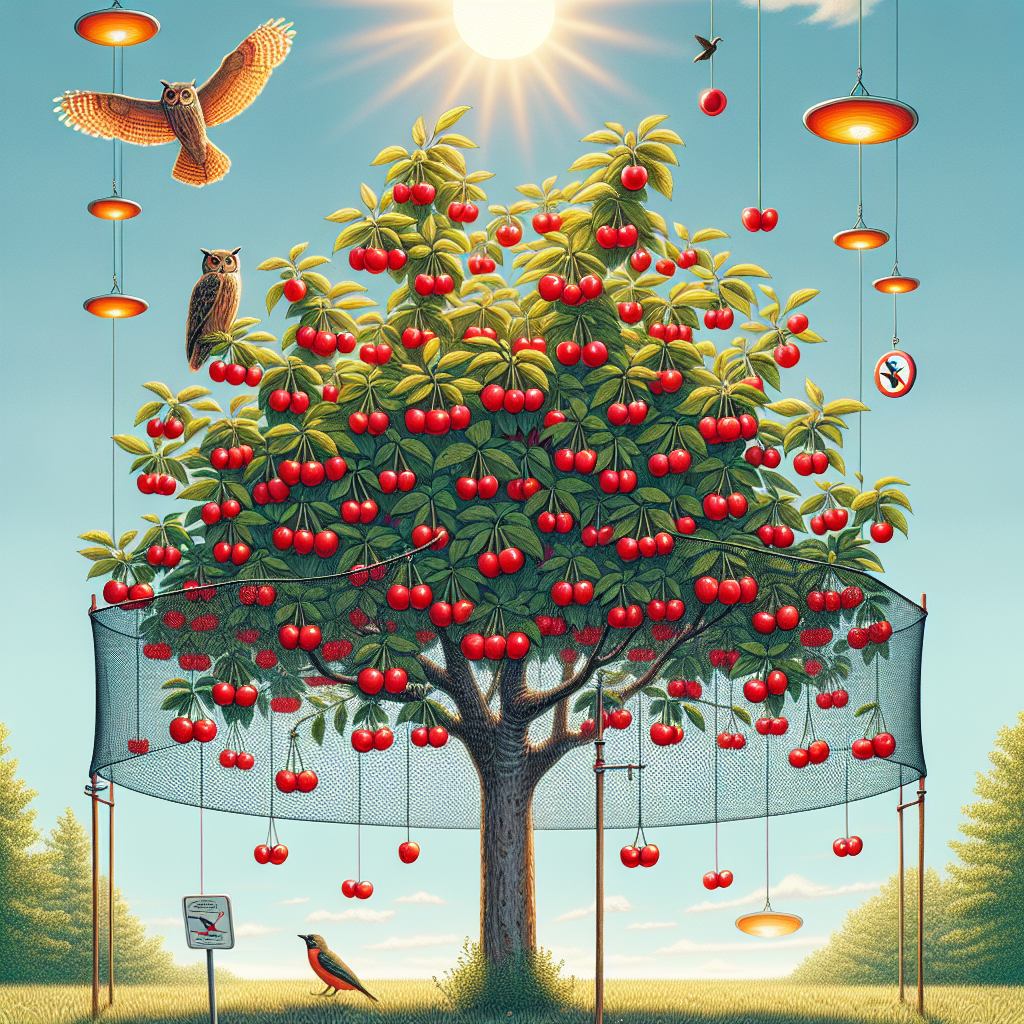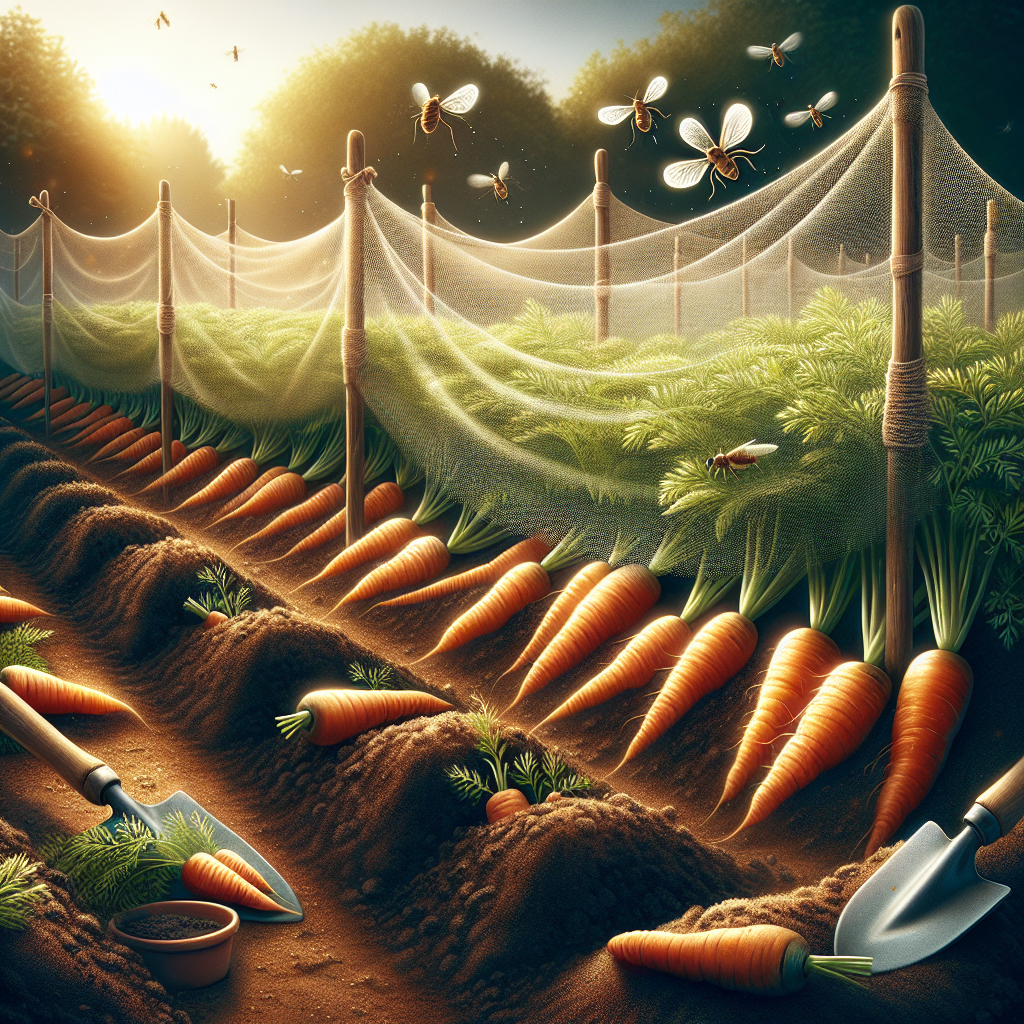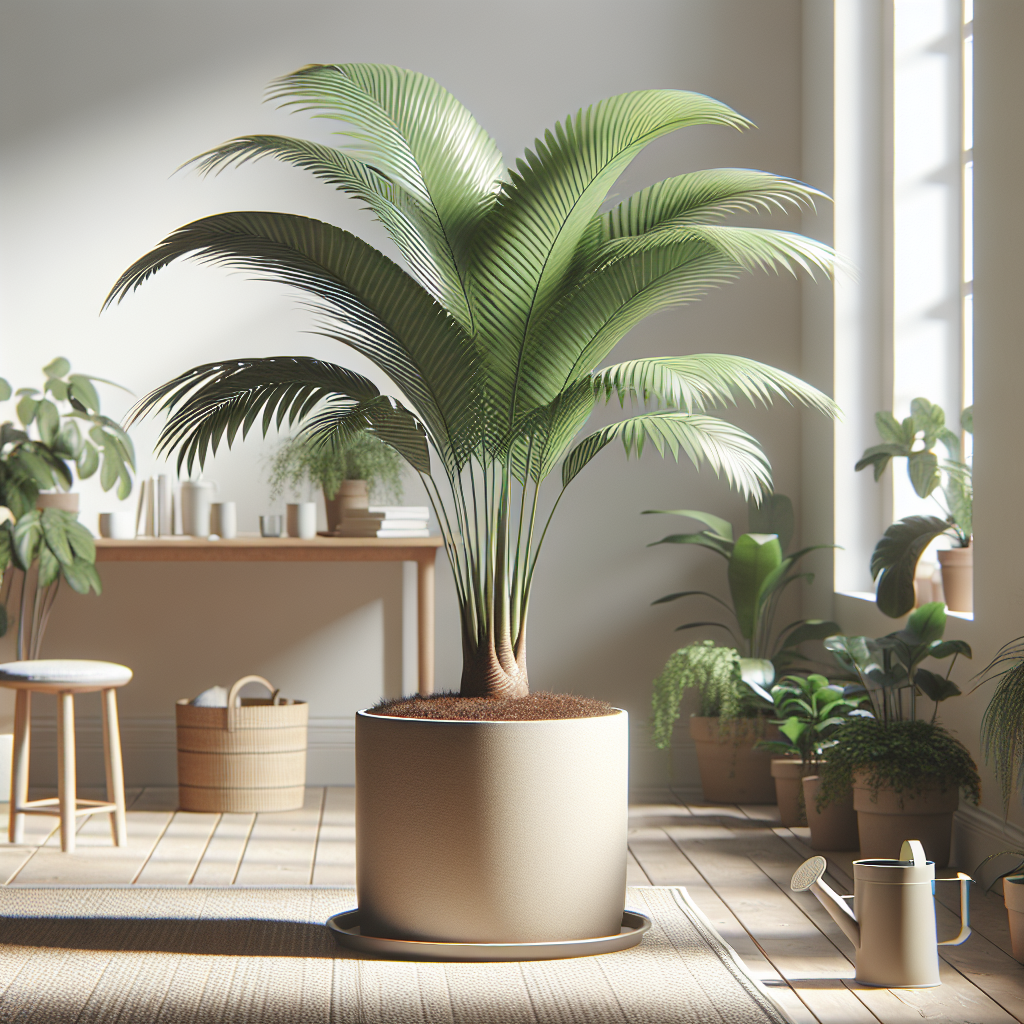How to Keep Birds Out of Cherry Trees
Updated July 25, 2024 at 2:19 am
Learn effective and humane strategies to prevent birds from feasting on your cherries, ensuring your harvest remains abundant and untouched.

Understanding the Cherry Tree Dilemma
There’s nothing quite as disheartening as nurturing cherry trees all season only to find the fruits of your labor literally pecked away. Birds, specifically, are notorious for swooping in and helping themselves to those juicy cherries. If you’re facing this frustrating scenario, worry not, there are effective solutions.
And just as creating a pollinator-friendly garden is essential for a thriving ecosystem, finding humane ways to protect your cherry crops is equally important.
Tree Netting: A Traditional Approach
One tried-and-true method for keeping birds at bay is tree netting. This protective barrier can be a great option to safeguard your cherries. When selecting netting, look for a lightweight but durable material that allows sunlight to penetrate while preventing birds from reaching the fruit.
There’s a bit of an art to draping netting so it effectively covers the canopy without damaging branches or hindering growth. Secure it at the base to prevent birds from finding their way underneath. A popular choice is the BirdBlock Protective Mesh Covering, which is often lauded in reviews for its ease of use and efficiency.
Find This and More on Amazon
Reflective Objects: Playing with Light
Birds are naturally deterred by bright flashing lights, making reflective objects an easy and inexpensive method to keep them away. Hanging old CDs, reflective tapes, or even specialized bird deterrent reflectors around your cherry tree can make a significant difference.
Products like the De-Bird Repellent Disks have been favored by many gardeners, as their reflective properties are effective in disturbing birds’ vision, thus steering them clear of your precious cherries.
Pros
- Simple to install around trees
- Non-toxic and eco-friendly option
- Cost-effective and reusable
Cons
- Might require frequent reapplication or adjustment
- Could be less effective on overcast days
Find This and More on Amazon
Decoy Predators: Fooling the Flock
Birds are likely to keep away from your trees if they sense a predator is nearby. Placing decoys like fake owls or hawks can instill a sense of danger. These decoys should be moved regularly to maintain the illusion that they are real, as birds can get used to stationary objects.
A well-received product in this category is the Dalen Gardeneer Owl Decoy. With lifelike eyes and a head that bobs in the wind, it provides an extra degree of realism that’s more likely to deter birds.
Pros
- Can be quite effective if moved often
- No harm comes to actual birds
- Also doubles as a garden ornament
Cons
- Requires regular interaction to be most effective
- Some birds may eventually realize it’s not a threat
Audible Deterrents: Disturbing Sounds
A less visible, but equally effective, option includes audible deterrents. These can range from ultrasonic devices to recordings of predator calls or distressed bird noises.
Keep in mind, these should be used in a way that does not disturb your neighbors or local wildlife unnecessarily. The Bird-X Yard Gard Electronic Animal Repeller boasts positive reviews for being a humane and non-intrusive method to repel birds with sounds inaudible to most humans.
Pros
- Humane way to deter birds
- Does not require physical barriers
- Long-term solution, often with adjustable settings
Cons
- Initial setup can be more involved
- May not affect all bird species
- Might need to be coupled with other deterrent methods
Find This and More on Amazon
Chili Pepper Spray: A Spicy Deterrent
You might have heard about the benefits of winter vegetable gardening, but did you know that chili can also be a powerful bird deterrent? Birds do not like the taste of capsaicin, the active component in chili peppers, which can keep them from eating treated cherries.
However, be careful when applying chili sprays, as they can irritate the skin and eyes upon contact. Always wear gloves and protective eyewear during application. Products such as the Critter Ridder Pepper Spray come recommended for being natural and effective.
Pros
- Organic and natural solution
- Non-lethal and does not harm the birds
- Easy to apply and natural decay over time
Cons
- Requires reapplication after rain or irrigation
- Can cause irritation, handle with care
- May not be suitable for those sensitive to strong odors
Cultivating Strong and Healthy Cherry Trees
Just like nurturing snake plants for robust growth, cherries require good health to resist bird damage. Certain cherry tree varieties might be more resistant to pest issues, including bird damage, so consider researching and choosing such types.
Regular pruning not only keeps your cherry trees healthy but also makes it easier to apply bird deterrents effectively. A well-maintained tree with open branches allows birds less covert resting spots and can reduce the likelihood of them feasting on your fruit.
Mechanical Deterrents: Moving to Scare
Mechanical deterrents that move in the wind can scare birds away from your cherry trees. Simple solutions such as spinning pinwheels, aluminum foil pie pans, or even streamers can be enough to startle birds and disrupt their landing.
Products such as Holographic Bird Scare Ribbon are inexpensive yet delight many with their results. The way they catch the light and flutter in the breeze can be enough to discourage birds from approaching your cherry trees.
Pros
- Non-toxic and does not harm the birds
- Minimal cost and easy to set up
- Visually unobtrusive in most garden settings
Cons
- May lose effect over time as birds get used to them
- Requires a breeze to be fully effective
Natural Predators: The Biological Approach
Creating an environment that encourages the presence of natural bird predators can help. For example, installing a perch for raptors such as hawks or falcons, which are natural predators of smaller birds, might keep the latter away from your cherries.
Fostering a friendly environment for these protective birds can be an effective long-term solution, much like creating a pollinator-friendly garden to balance the ecosystem.
Combining Deterrents: A Multi-Faceted Strategy
No single method is foolproof when it comes to deterring birds. A combination of deterrents should therefore be considered. For example, netting can be paired with audible deterrents or decoy predators for a more comprehensive approach.
By combining reflective tapes with mechanical devices such as scare-eye balloons or even a new-age solution like a laser bird deterrent—which has become more accessible to homeowners—your cherry trees stand a better chance against bird invasions.
Timely Harvesting: Don’t Wait Too Long
The longer cherries remain on the tree, the more they’ll attract birds. It might be beneficial to harvest the fruit as soon as it’s ripe, similar to the urgency in harvesting your vegetable garden at the right time for maximum yield.
By monitoring the ripeness closely and picking cherries promptly, you reduce the risk to your crop. Also, ensure that fallen cherries are cleared from the ground to avoid attracting birds to the area.
Conclusion and Content area 3 of 3
This is the third section of a detailed guide designed to help you protect your cherry trees from birds. The tips provided span a variety of methods, from netting and reflective objects to natural predators and mechanical deterrents. Combining several strategies can offer the best protection for your cherry trees.
Keep in mind that patience and observation are key. Not all deterrents will work the same in every situation. By understanding the specific bird species you’re dealing with and their habits, you can tailor your approach to be as effective as possible. And in the spirit of ecological balance, always look for the most humane methods to protect your cherry trees, ensuring that both your crop and the local wildlife can thrive in harmony.
Understanding Bird Behavior
Grasping why birds are attracted to cherry trees can influence the strategies you employ to deter them. Birds seek out fruit trees for both the nutritious food and the shelter they provide. By understanding avian habits, you may anticipate and manage their presence in your garden more effectively.
Just as you would focus on growing cast iron plants in low light by understanding their needs, gaining knowledge about bird behavior towards cherry trees can lead to more focused deterrence methods.
Community Involvement: Sharing the Task
Collaboration with neighbors who also grow fruit can help in managing bird populations. Birds often move between properties, so a collective effort in deterring them can improve results for everyone involved.
Sharing successful strategies and pooling resources for deterrents can make the task less burdensome. It’s a community approach much like caring for indoor air-purifying plants like peace lilies can benefit everyone in the home.
Cultivating Alternative Food Sources
Offering birds alternative food sources away from your cherry trees can be an effective strategy. Planting berry bushes or providing bird feeders at a distance can distract birds from your cherries.
This method is in line with promoting biodiversity in your backyard, similar to creating habitats for pollinators in your garden. It keeps the birds fed and happy, while your cherry trees remain untouched.
Professional Consultation: When to Seek Help
If you’ve tried multiple methods and continue to struggle with birds, it might be time to consult with a local extension office or pest control professional.
These experts can offer tailored advice, much like how Philodendron Goeldii care guides provide specific instructions for thriving plants. Professionals will understand the local bird population and can suggest proven deterrents for your particular area.
Legal Considerations and Wildlife Protection
Be aware of local wildlife protection laws before implementing any bird deterrents. Some birds may be protected under regional legislation, and it’s important to use methods that do not harm them.
This step is about respecting the environment, in the same way, that maintaining maidenhair ferns in low light should be done with care to the plant’s needs and health. Always strive for humane solutions that balance your cherry tree protection with ethical treatment of wildlife.
Monitoring, Maintenance, and Adjustments
Like any aspect of gardening, protecting your cherry trees from birds requires regular monitoring and maintenance. Deterrents may need adjustments or replacement over time, and bird behavior can also change.
Evaluating the effectiveness of each strategy is key, just as one would assess watering needs for spider plants in low light conditions. Stay vigilant and willing to try new methods if old ones lose their efficacy.
Conclusion and Content area 3 of 3
Keeping birds out of your cherry trees combines a deep understanding of bird behavior, regular gardening practices, and a touch of creativity. By employing a mix of physical barriers, visual and auditory deterrents, and even biological strategies, you greatly increase the chances of enjoying a full cherry harvest.
Remember to respect local wildlife, consider the broader ecosystem, and engage with your community for shared success. And remember, the most effective bird control plan is proactive, humane, and adaptable—much like any well-thought-out gardening strategy that fosters a healthy and productive environment for all.
Shop more on Amazon
Flowers & Plants Team
Flowers & Plants Team



